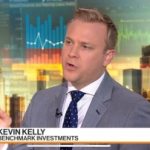Index Investing
Kelly Indexes serves as the basis for exchange traded funds (ETFs) and institutional asset mandates
It is not possible to invest directly in an index. There are exchange traded funds that track the performance of Kelly’s indexes.
ETFs Tracking KELLY Benchmark Indexes
Kelly Benchmark Indexes does not endorse, sell, promote or manage any investment fund or other investment vehicle that is offered by third parties and that seeks to provide an investment return based on the performance of any index. Please refer to the disclaimers for more information about Benchmark Investments relationship to such third party product offerings.
Benchmark Linked Products

Industrial Real Estate ETF
ETF Symbol: INDS
Issuer: Pacer ETFs
Sponsor: Kelly Benchmark Indexes (Benchmark Investments LLC)
Exchange: NYSE Arca
Lead Market Maker: Jane Street
Index Name: Kelly Industrial Real Estate Index
Index Symbol: INDSSCTR
Index Calculation: NASDAQ


Data & Technology Infrastructure ETF
ETF Symbol: SRVR
Issuer: Pacer ETFs
Sponsor: Kelly Benchmark Indexes (Benchmark Investments LLC)
Exchange: NYSE Arca
Lead Market Maker: Jane Street
Index Symbol: SRVRSCTR
Index Calculation: NASDAQ

Frequently Asked Questions
What is a Benchmark ETF?
A benchmark ETF (exchange traded fund) is more commonly known as an index-tracking or passively managed ETF. The fund’s directive is to track the underlying benchmark which is the market for that particular asset class or strategy.
What is a Benchmark?
A benchmark is a standard against which the performance of a security, mutual fund or investment manager can be measured or judged. Benchmarks are created to include multiple securities representing some aspect of the total market. Broadly speaking, a benchmark is an index that serves as the measurement yardstick for a portfolio by comparing portfolio characteristics such as returns, risk, component weights and exposure to sectors, styles and other factors to the benchmark.
It is a point of reference from which measurements may be made. In investing circles, almost all benchmarks are indexes, although not all indexes are benchmarks. Active managers try to beat benchmarks while most ETFs track benchmarks.
What is a Benchmark’s Role?
A benchmark serves a crucial role in investing. Often a market index, a benchmark typically provides a starting point for a portfolio manager to construct a portfolio and directs how that portfolio should be managed on an ongoing basis from the perspectives of both risk and return. It also allows investors to gauge the relative performance of their portfolios.
What are Benchmark Standards to Consider?
Selecting a specific benchmark is an individual decision, but there are some minimum standards that any benchmark under consideration should meet. To be effective, a benchmark should meet most, if not all, of the following criteria:
- Unambiguous and transparent – The names and weights of securities that constitute a benchmark should be clearly defined.
- Investable – The benchmark should contain securities that an investor can purchase in the market or easily replicate.
- Priced daily – The benchmark’s return should be calculated regularly.
- Availability of historical data – Past returns of the benchmark should be available in order to gauge historical returns.
- Low turnover – There should not be high turnover in the securities in the index because it can be difficult to base portfolio allocation on an index whose makeup is constantly changing.
- Specified in advance – The benchmark should be constructed prior to the start of evaluation.
- Published risk characteristics – The benchmark provider should regularly publish detailed risk metrics of the benchmark so the investment manager can compare the actively managed portfolio risks with the passive benchmark risks.
Advantages of ETFs
There are many advantages to ETFs and some of the most popular are:
- ETF typically have lower management fees as well as there are no sales load on ETFs. However, brokerage commissions do apply
- ETFs can be bought or sold at any time of the day. Conversely, mutual funds settle after the market close
- More tax efficient: Investors have better control over when they pay capital gains tax
- Trading transactions: Because they are traded like stocks, investors can place a variety of types of orders such as limit orders, stop-loss orders, and buying on margin, which are not possible with mutual funds
Disadvantages of ETFs
While superior in many respects, ETFs do have drawbacks, including:
- Trading costs: If you invest small amounts frequently, there may be lower-cost alternatives investing directly with a fund company in a no-load fund
- Illiquidity: Some thinly traded ETFs have wide bid/ask spreads, which means you’ll be buying at the high price of the spread and selling at the low price of the spread
What is an ETF?
An ETF, exchange-traded fund, is an investment that’s built like a mutual fund—investing in potentially hundreds, sometimes thousands, of individual securities—but trades on an exchange throughout the day like a stock.
An ETF is similar to a mutual fund in that it offers investors a proportionate share in a pool of stocks, bonds, and other assets. It is most commonly structured as an open-end investment company, as are mutual funds, and is governed by the same regulations. Also, like a mutual fund, an ETF is required to post the marked-to-market net asset value of its portfolio at the end of each trading day.
Are ETFs only for stocks?
Any asset class that has a published index and is liquid enough to be traded daily can be made into an ETF. Bonds, real estate, commodities, currencies, and multi-asset funds are all available in an ETF format.
How can I short an ETF?
A broker can help facilitate a short order on an ETF. Most ETFs advertise that they can be shorted, but often there is a limit on the number of shares that are available to be sold short at any given time.
What are the pros and cons of ETFs?
The biggest advantages of getting into ETFs versus investing in mutual funds or stocks include:
- Lower cost management fees
- Low fixed transaction costs
- Transparency
- Flexibility
- Convenience
- Tax efficient
- Instant pricing
- Global investment menu
Nearly every type of investor will find ETFs more compelling than mutual funds.
On the other hand, some of the features which are advantages for most investors can be unattractive for certain others. Fixed transaction costs, which are low for investors buying large dollar amounts of ETFs, become relatively high for investors buying small dollar amounts at a time. Therefore, any investor buying less than $1,000 worth of ETFs at a time should consider buying a transaction-free ETF or mutual fund.
What is an Index?
An index is a group of securities chosen to track a particular investment theme such as a market, asset class, sector, industry, or even strategy. Generally the goal is to accurately represent the risk/return profile of that theme without necessarily holding every security that might qualify.
The exact compilation of securities in an index is known as its basket, while the proportion of the index each individual security comprises is its weighting. An index’s value is a single number that, when referenced to a starting value, describes how the index has performed over time.
What does an index do?
Indexes serve as a representation of markets, sectors, investment themes or asset classes.
Markets or even individual market sectors, such as large cap stocks, or real estate investment trusts, can be extremely large as they including hundreds and even thousands of securities. Buying up all the securities just to access one market or asset class is too expensive and time-consuming —not to mention ineffective – for most market participants.
That’s where indexes come in. An index is comprised of only the securities most relevant to its investment theme, allowing market participants to follow market trends without having to track the entire available universe of securities. Essentially, an index acts as a yardstick, capturing representative exposure to a particular market or sector.
There are thousands of available indexes tracking countless market themes or approaches, from large capitalization stocks to foreign currency markets to retail real estate.
How to Use Indexes?
Market participants can use indexes in a variety of ways:
- To assess a given market’s performance
- To gauge how well an active strategy is working
- To serve as the foundation for investment products, such as ETFs or mutual funds
- To evaluate a market’s risk profile or its diversification benefits
- To measure passive risk premia
When Did Indexing Start?
In 1884, Charles Dow composed his first stock average, which contained nine railroads and two industrial companies that appeared in the Customer’s Afternoon Letter, a daily two-page financial news bulletin which was the precursor to The Wall Street Journal. On January 2, 1886, the number of stocks represented in what is now the Dow Jones Transportation Average dropped from 14 to 12, as the Central Pacific Railroad and Central Railroad of New Jersey were removed. Though comprising the same number of stocks, this index contained only one of the original twelve industrials that would eventually form Dow’s most famous index
What is the Market?
Most market participants and media refer to the market or markets in the US as:
- The S&P500 Index (SPX) which is a market capitalization index
- The Dow Jones Industrial Average (DJIA) which is a price weighting index
- The Nasdaq 100 (NDX) which is a market capitalization index of Nadaq-listed only companies.
What is a Benchmark ETF?
A benchmark ETF (exchange traded fund) is more commonly known as an index-tracking or passively managed ETF. The fund’s directive is to track the underlying benchmark which is the market for that particular asset class or strategy.
What is a Benchmark?
A benchmark is a standard against which the performance of a security, mutual fund or investment manager can be measured or judged. Benchmarks are created to include multiple securities representing some aspect of the total market. Broadly speaking, a benchmark is an index that serves as the measurement yardstick for a portfolio by comparing portfolio characteristics such as returns, risk, component weights and exposure to sectors, styles and other factors to the benchmark.
It is a point of reference from which measurements may be made. In investing circles, almost all benchmarks are indexes, although not all indexes are benchmarks. Active managers try to beat benchmarks while most ETFs track benchmarks.
What is a Benchmark’s Role?
A benchmark serves a crucial role in investing. Often a market index, a benchmark typically provides a starting point for a portfolio manager to construct a portfolio and directs how that portfolio should be managed on an ongoing basis from the perspectives of both risk and return. It also allows investors to gauge the relative performance of their portfolios.
What are Benchmark Standards to Consider?
Selecting a specific benchmark is an individual decision, but there are some minimum standards that any benchmark under consideration should meet. To be effective, a benchmark should meet most, if not all, of the following criteria:
- Unambiguous and transparent – The names and weights of securities that constitute a benchmark should be clearly defined.
- Investable – The benchmark should contain securities that an investor can purchase in the market or easily replicate.
- Priced daily – The benchmark’s return should be calculated regularly.
- Availability of historical data – Past returns of the benchmark should be available in order to gauge historical returns.
- Low turnover – There should not be high turnover in the securities in the index because it can be difficult to base portfolio allocation on an index whose makeup is constantly changing.
- Specified in advance – The benchmark should be constructed prior to the start of evaluation.
- Published risk characteristics – The benchmark provider should regularly publish detailed risk metrics of the benchmark so the investment manager can compare the actively managed portfolio risks with the passive benchmark risks.
What is a Benchmark ETF?
A benchmark ETF (exchange traded fund) is more commonly known as an index-tracking or passively managed ETF. The fund’s directive is to track the underlying benchmark which is the market for that particular asset class or strategy.
Advantages of ETFs
There are many advantages to ETFs and some of the most popular are:
- ETF typically have lower management fees as well as there are no sales load on ETFs. However, brokerage commissions do apply
- ETFs can be bought or sold at any time of the day. Conversely, mutual funds settle after the market close
- More tax efficient: Investors have better control over when they pay capital gains tax
- Trading transactions: Because they are traded like stocks, investors can place a variety of types of orders such as limit orders, stop-loss orders, and buying on margin, which are not possible with mutual funds
Disadvantages of ETFs
While superior in many respects, ETFs do have drawbacks, including:
- Trading costs: If you invest small amounts frequently, there may be lower-cost alternatives investing directly with a fund company in a no-load fund
- Illiquidity: Some thinly traded ETFs have wide bid/ask spreads, which means you’ll be buying at the high price of the spread and selling at the low price of the spread
What is an ETF?
An ETF, exchange-traded fund, is an investment that’s built like a mutual fund—investing in potentially hundreds, sometimes thousands, of individual securities—but trades on an exchange throughout the day like a stock.
An ETF is similar to a mutual fund in that it offers investors a proportionate share in a pool of stocks, bonds, and other assets. It is most commonly structured as an open-end investment company, as are mutual funds, and is governed by the same regulations. Also, like a mutual fund, an ETF is required to post the marked-to-market net asset value of its portfolio at the end of each trading day.
Are ETFs only for stocks?
Any asset class that has a published index and is liquid enough to be traded daily can be made into an ETF. Bonds, real estate, commodities, currencies, and multi-asset funds are all available in an ETF format.
How can I short an ETF?
A broker can help facilitate a short order on an ETF. Most ETFs advertise that they can be shorted, but often there is a limit on the number of shares that are available to be sold short at any given time.
What are the pros and cons of ETFs?
The biggest advantages of getting into ETFs versus investing in mutual funds or stocks include:
- Lower cost management fees
- Low fixed transaction costs
- Transparency
- Flexibility
- Convenience
- Tax efficient
- Instant pricing
- Global investment menu
Nearly every type of investor will find ETFs more compelling than mutual funds.
On the other hand, some of the features which are advantages for most investors can be unattractive for certain others. Fixed transaction costs, which are low for investors buying large dollar amounts of ETFs, become relatively high for investors buying small dollar amounts at a time. Therefore, any investor buying less than $1,000 worth of ETFs at a time should consider buying a transaction-free ETF or mutual fund.
What is an Index?
An index is a group of securities chosen to track a particular investment theme such as a market, asset class, sector, industry, or even strategy. Generally the goal is to accurately represent the risk/return profile of that theme without necessarily holding every security that might qualify.
The exact compilation of securities in an index is known as its basket, while the proportion of the index each individual security comprises is its weighting. An index’s value is a single number that, when referenced to a starting value, describes how the index has performed over time.
What does an index do?
Indexes serve as a representation of markets, sectors, investment themes or asset classes.
Markets or even individual market sectors, such as large cap stocks, or real estate investment trusts, can be extremely large as they including hundreds and even thousands of securities. Buying up all the securities just to access one market or asset class is too expensive and time-consuming —not to mention ineffective – for most market participants.
That’s where indexes come in. An index is comprised of only the securities most relevant to its investment theme, allowing market participants to follow market trends without having to track the entire available universe of securities. Essentially, an index acts as a yardstick, capturing representative exposure to a particular market or sector.
There are thousands of available indexes tracking countless market themes or approaches, from large capitalization stocks to foreign currency markets to retail real estate.
How to Use Indexes?
Market participants can use indexes in a variety of ways:
- To assess a given market’s performance
- To gauge how well an active strategy is working
- To serve as the foundation for investment products, such as ETFs or mutual funds
- To evaluate a market’s risk profile or its diversification benefits
- To measure passive risk premia
When Did Indexing Start?
In 1884, Charles Dow composed his first stock average, which contained nine railroads and two industrial companies that appeared in the Customer’s Afternoon Letter, a daily two-page financial news bulletin which was the precursor to The Wall Street Journal. On January 2, 1886, the number of stocks represented in what is now the Dow Jones Transportation Average dropped from 14 to 12, as the Central Pacific Railroad and Central Railroad of New Jersey were removed. Though comprising the same number of stocks, this index contained only one of the original twelve industrials that would eventually form Dow’s most famous index
What is the Market?
Most market participants and media refer to the market or markets in the US as:
- The S&P500 Index (SPX) which is a market capitalization index
- The Dow Jones Industrial Average (DJIA) which is a price weighting index
- The Nasdaq 100 (NDX) which is a market capitalization index of Nadaq-listed only companies.
- All
-
What is a Benchmark ETF?
A benchmark ETF (exchange traded fund) is more commonly known as an index-tracking or passively managed ETF. The fund’s directive is to track the underlying benchmark which is the market for that particular asset class or strategy.
What is a Benchmark?
A benchmark is a standard against which the performance of a security, mutual fund or investment manager can be measured or judged. Benchmarks are created to include multiple securities representing some aspect of the total market. Broadly speaking, a benchmark is an index that serves as the measurement yardstick for a portfolio by comparing portfolio characteristics such as returns, risk, component weights and exposure to sectors, styles and other factors to the benchmark.
It is a point of reference from which measurements may be made. In investing circles, almost all benchmarks are indexes, although not all indexes are benchmarks. Active managers try to beat benchmarks while most ETFs track benchmarks.
What is a Benchmark’s Role?
A benchmark serves a crucial role in investing. Often a market index, a benchmark typically provides a starting point for a portfolio manager to construct a portfolio and directs how that portfolio should be managed on an ongoing basis from the perspectives of both risk and return. It also allows investors to gauge the relative performance of their portfolios.
What are Benchmark Standards to Consider?
Selecting a specific benchmark is an individual decision, but there are some minimum standards that any benchmark under consideration should meet. To be effective, a benchmark should meet most, if not all, of the following criteria:
- Unambiguous and transparent – The names and weights of securities that constitute a benchmark should be clearly defined.
- Investable – The benchmark should contain securities that an investor can purchase in the market or easily replicate.
- Priced daily – The benchmark’s return should be calculated regularly.
- Availability of historical data – Past returns of the benchmark should be available in order to gauge historical returns.
- Low turnover – There should not be high turnover in the securities in the index because it can be difficult to base portfolio allocation on an index whose makeup is constantly changing.
- Specified in advance – The benchmark should be constructed prior to the start of evaluation.
- Published risk characteristics – The benchmark provider should regularly publish detailed risk metrics of the benchmark so the investment manager can compare the actively managed portfolio risks with the passive benchmark risks.
Advantages of ETFs
There are many advantages to ETFs and some of the most popular are:
- ETF typically have lower management fees as well as there are no sales load on ETFs. However, brokerage commissions do apply
- ETFs can be bought or sold at any time of the day. Conversely, mutual funds settle after the market close
- More tax efficient: Investors have better control over when they pay capital gains tax
- Trading transactions: Because they are traded like stocks, investors can place a variety of types of orders such as limit orders, stop-loss orders, and buying on margin, which are not possible with mutual funds
Disadvantages of ETFs
While superior in many respects, ETFs do have drawbacks, including:
- Trading costs: If you invest small amounts frequently, there may be lower-cost alternatives investing directly with a fund company in a no-load fund
- Illiquidity: Some thinly traded ETFs have wide bid/ask spreads, which means you’ll be buying at the high price of the spread and selling at the low price of the spread
What is an ETF?
An ETF, exchange-traded fund, is an investment that’s built like a mutual fund—investing in potentially hundreds, sometimes thousands, of individual securities—but trades on an exchange throughout the day like a stock.
An ETF is similar to a mutual fund in that it offers investors a proportionate share in a pool of stocks, bonds, and other assets. It is most commonly structured as an open-end investment company, as are mutual funds, and is governed by the same regulations. Also, like a mutual fund, an ETF is required to post the marked-to-market net asset value of its portfolio at the end of each trading day.
Are ETFs only for stocks?
Any asset class that has a published index and is liquid enough to be traded daily can be made into an ETF. Bonds, real estate, commodities, currencies, and multi-asset funds are all available in an ETF format.
How can I short an ETF?
A broker can help facilitate a short order on an ETF. Most ETFs advertise that they can be shorted, but often there is a limit on the number of shares that are available to be sold short at any given time.
What are the pros and cons of ETFs?
The biggest advantages of getting into ETFs versus investing in mutual funds or stocks include:
- Lower cost management fees
- Low fixed transaction costs
- Transparency
- Flexibility
- Convenience
- Tax efficient
- Instant pricing
- Global investment menu
Nearly every type of investor will find ETFs more compelling than mutual funds.
On the other hand, some of the features which are advantages for most investors can be unattractive for certain others. Fixed transaction costs, which are low for investors buying large dollar amounts of ETFs, become relatively high for investors buying small dollar amounts at a time. Therefore, any investor buying less than $1,000 worth of ETFs at a time should consider buying a transaction-free ETF or mutual fund.
What is an Index?
An index is a group of securities chosen to track a particular investment theme such as a market, asset class, sector, industry, or even strategy. Generally the goal is to accurately represent the risk/return profile of that theme without necessarily holding every security that might qualify.
The exact compilation of securities in an index is known as its basket, while the proportion of the index each individual security comprises is its weighting. An index’s value is a single number that, when referenced to a starting value, describes how the index has performed over time.
What does an index do?
Indexes serve as a representation of markets, sectors, investment themes or asset classes.
Markets or even individual market sectors, such as large cap stocks, or real estate investment trusts, can be extremely large as they including hundreds and even thousands of securities. Buying up all the securities just to access one market or asset class is too expensive and time-consuming —not to mention ineffective – for most market participants.
That’s where indexes come in. An index is comprised of only the securities most relevant to its investment theme, allowing market participants to follow market trends without having to track the entire available universe of securities. Essentially, an index acts as a yardstick, capturing representative exposure to a particular market or sector.
There are thousands of available indexes tracking countless market themes or approaches, from large capitalization stocks to foreign currency markets to retail real estate.
How to Use Indexes?
Market participants can use indexes in a variety of ways:
- To assess a given market’s performance
- To gauge how well an active strategy is working
- To serve as the foundation for investment products, such as ETFs or mutual funds
- To evaluate a market’s risk profile or its diversification benefits
- To measure passive risk premia
When Did Indexing Start?
In 1884, Charles Dow composed his first stock average, which contained nine railroads and two industrial companies that appeared in the Customer’s Afternoon Letter, a daily two-page financial news bulletin which was the precursor to The Wall Street Journal. On January 2, 1886, the number of stocks represented in what is now the Dow Jones Transportation Average dropped from 14 to 12, as the Central Pacific Railroad and Central Railroad of New Jersey were removed. Though comprising the same number of stocks, this index contained only one of the original twelve industrials that would eventually form Dow’s most famous index
What is the Market?
Most market participants and media refer to the market or markets in the US as:
- The S&P500 Index (SPX) which is a market capitalization index
- The Dow Jones Industrial Average (DJIA) which is a price weighting index
- The Nasdaq 100 (NDX) which is a market capitalization index of Nadaq-listed only companies.
- Benchmarks
-
What is a Benchmark ETF?
A benchmark ETF (exchange traded fund) is more commonly known as an index-tracking or passively managed ETF. The fund’s directive is to track the underlying benchmark which is the market for that particular asset class or strategy.
What is a Benchmark?
A benchmark is a standard against which the performance of a security, mutual fund or investment manager can be measured or judged. Benchmarks are created to include multiple securities representing some aspect of the total market. Broadly speaking, a benchmark is an index that serves as the measurement yardstick for a portfolio by comparing portfolio characteristics such as returns, risk, component weights and exposure to sectors, styles and other factors to the benchmark.
It is a point of reference from which measurements may be made. In investing circles, almost all benchmarks are indexes, although not all indexes are benchmarks. Active managers try to beat benchmarks while most ETFs track benchmarks.
What is a Benchmark’s Role?
A benchmark serves a crucial role in investing. Often a market index, a benchmark typically provides a starting point for a portfolio manager to construct a portfolio and directs how that portfolio should be managed on an ongoing basis from the perspectives of both risk and return. It also allows investors to gauge the relative performance of their portfolios.
What are Benchmark Standards to Consider?
Selecting a specific benchmark is an individual decision, but there are some minimum standards that any benchmark under consideration should meet. To be effective, a benchmark should meet most, if not all, of the following criteria:
- Unambiguous and transparent – The names and weights of securities that constitute a benchmark should be clearly defined.
- Investable – The benchmark should contain securities that an investor can purchase in the market or easily replicate.
- Priced daily – The benchmark’s return should be calculated regularly.
- Availability of historical data – Past returns of the benchmark should be available in order to gauge historical returns.
- Low turnover – There should not be high turnover in the securities in the index because it can be difficult to base portfolio allocation on an index whose makeup is constantly changing.
- Specified in advance – The benchmark should be constructed prior to the start of evaluation.
- Published risk characteristics – The benchmark provider should regularly publish detailed risk metrics of the benchmark so the investment manager can compare the actively managed portfolio risks with the passive benchmark risks.
- ETFs
-
What is a Benchmark ETF?
A benchmark ETF (exchange traded fund) is more commonly known as an index-tracking or passively managed ETF. The fund’s directive is to track the underlying benchmark which is the market for that particular asset class or strategy.
Advantages of ETFs
There are many advantages to ETFs and some of the most popular are:
- ETF typically have lower management fees as well as there are no sales load on ETFs. However, brokerage commissions do apply
- ETFs can be bought or sold at any time of the day. Conversely, mutual funds settle after the market close
- More tax efficient: Investors have better control over when they pay capital gains tax
- Trading transactions: Because they are traded like stocks, investors can place a variety of types of orders such as limit orders, stop-loss orders, and buying on margin, which are not possible with mutual funds
Disadvantages of ETFs
While superior in many respects, ETFs do have drawbacks, including:
- Trading costs: If you invest small amounts frequently, there may be lower-cost alternatives investing directly with a fund company in a no-load fund
- Illiquidity: Some thinly traded ETFs have wide bid/ask spreads, which means you’ll be buying at the high price of the spread and selling at the low price of the spread
What is an ETF?
An ETF, exchange-traded fund, is an investment that’s built like a mutual fund—investing in potentially hundreds, sometimes thousands, of individual securities—but trades on an exchange throughout the day like a stock.
An ETF is similar to a mutual fund in that it offers investors a proportionate share in a pool of stocks, bonds, and other assets. It is most commonly structured as an open-end investment company, as are mutual funds, and is governed by the same regulations. Also, like a mutual fund, an ETF is required to post the marked-to-market net asset value of its portfolio at the end of each trading day.
Are ETFs only for stocks?
Any asset class that has a published index and is liquid enough to be traded daily can be made into an ETF. Bonds, real estate, commodities, currencies, and multi-asset funds are all available in an ETF format.
How can I short an ETF?
A broker can help facilitate a short order on an ETF. Most ETFs advertise that they can be shorted, but often there is a limit on the number of shares that are available to be sold short at any given time.
What are the pros and cons of ETFs?
The biggest advantages of getting into ETFs versus investing in mutual funds or stocks include:
- Lower cost management fees
- Low fixed transaction costs
- Transparency
- Flexibility
- Convenience
- Tax efficient
- Instant pricing
- Global investment menu
Nearly every type of investor will find ETFs more compelling than mutual funds.
On the other hand, some of the features which are advantages for most investors can be unattractive for certain others. Fixed transaction costs, which are low for investors buying large dollar amounts of ETFs, become relatively high for investors buying small dollar amounts at a time. Therefore, any investor buying less than $1,000 worth of ETFs at a time should consider buying a transaction-free ETF or mutual fund.
- Indexes
-
What is an Index?
An index is a group of securities chosen to track a particular investment theme such as a market, asset class, sector, industry, or even strategy. Generally the goal is to accurately represent the risk/return profile of that theme without necessarily holding every security that might qualify.
The exact compilation of securities in an index is known as its basket, while the proportion of the index each individual security comprises is its weighting. An index’s value is a single number that, when referenced to a starting value, describes how the index has performed over time.
What does an index do?
Indexes serve as a representation of markets, sectors, investment themes or asset classes.
Markets or even individual market sectors, such as large cap stocks, or real estate investment trusts, can be extremely large as they including hundreds and even thousands of securities. Buying up all the securities just to access one market or asset class is too expensive and time-consuming —not to mention ineffective – for most market participants.
That’s where indexes come in. An index is comprised of only the securities most relevant to its investment theme, allowing market participants to follow market trends without having to track the entire available universe of securities. Essentially, an index acts as a yardstick, capturing representative exposure to a particular market or sector.
There are thousands of available indexes tracking countless market themes or approaches, from large capitalization stocks to foreign currency markets to retail real estate.
How to Use Indexes?
Market participants can use indexes in a variety of ways:
- To assess a given market’s performance
- To gauge how well an active strategy is working
- To serve as the foundation for investment products, such as ETFs or mutual funds
- To evaluate a market’s risk profile or its diversification benefits
- To measure passive risk premia
When Did Indexing Start?
In 1884, Charles Dow composed his first stock average, which contained nine railroads and two industrial companies that appeared in the Customer’s Afternoon Letter, a daily two-page financial news bulletin which was the precursor to The Wall Street Journal. On January 2, 1886, the number of stocks represented in what is now the Dow Jones Transportation Average dropped from 14 to 12, as the Central Pacific Railroad and Central Railroad of New Jersey were removed. Though comprising the same number of stocks, this index contained only one of the original twelve industrials that would eventually form Dow’s most famous index
What is the Market?
Most market participants and media refer to the market or markets in the US as:
- The S&P500 Index (SPX) which is a market capitalization index
- The Dow Jones Industrial Average (DJIA) which is a price weighting index
- The Nasdaq 100 (NDX) which is a market capitalization index of Nadaq-listed only companies.
Future Four Horsemen
Future Four Horsemen
SRVR is the sophisticated backbone of data centers, wireless towers, and fiber optic networks that moves the economy’s critical data and analytics. SRVR represents the foundational infrastructure for the intelligence revolution, superseding the Computing and Industrial Revolutions before it. Cloud computing, 5G, and other ‘themes’ are not even close to encompassing what SRVR represents.
E-Commerce Revolution
E-Commerce Revolution
INDS is the best way to capitalize on the growth of e-Commerce as the insatiable e-commerce demand to receive packages in a day or less has led to an era of ‘last mile’ revolution. It’s an arms race for space. Our constituents own and manage best-in-class warehouse/distribution facilities.







